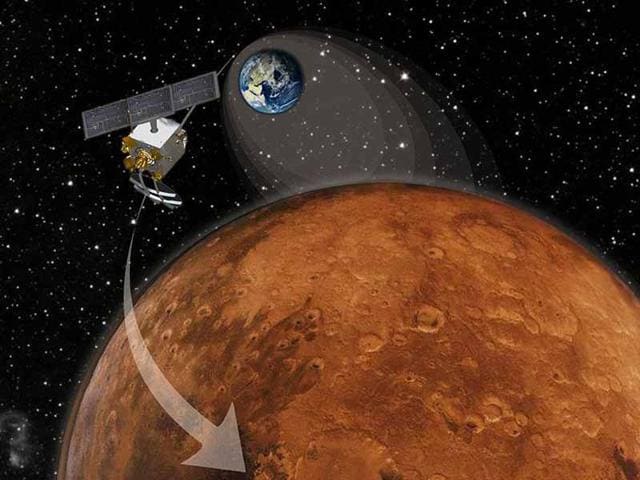Indore's RRCAT scientists celebrate Mangalyaan's successful launch
Raja Ramanna Centre for Advanced Technology in Indore has enough reasons to be proud as it has played a major role in making Mangalyaan project successful. HT interactive:Ride the Mangalyaan
Raja Ramanna Centre for Advanced Technology (RRCAT) in Indore has enough reasons to be proud.

RRCAT has played a major role in making Mangalyaan project successful. One of the experimental payloads carried by Mangalyaan — Lyman Alpha Photometer — was calibrated using high resolution vacuum ultra violet beamline set up by BARC at Indus-1 synchrotron radiation source at RRCAT, Indore.
The Lyman Alpha Photometer measures the relative abundance of deuterium and hydrogen from Lyman Alpha emission in the Martian upper atmosphere.
Measurement of D/H (Deuterium to Hydrogen abundance ratio) will allow to understand the loss process of water from the planet.
Earlier, the RRCAT had played a major role in making the European Organisation for Nuclear Research (CERN) project of Large Hadron Collider (LHC). It provided vital parts for the project and some 80-odd scientists, most of them born and brought up in Madhya Pradesh, worked hard for 12 years to provide components of international standard for the project.
The RRCAT was the nodal agency from the DAE for the ambitious LHC project. Besides RRCAT, Bhabha Atomic Research Centre and Electronics Corporation of India Ltd (ECIL), also played a major role in the development of LHC components.
The Centre erupted in joy on Wednesday when spacecraft Mangalyaan entered the Martian orbit to study the Red Planet. Scientists at RRCAT congratulated each other. "We join the nation in rejoicing. It gives me a great feeling as an Indian and also as a scientist," said Dr PD Gupta, director of RRCAT, a premier research centre of the Department of Atomic Energy, which is engaged in R & D in the frontline areas of accelerators, lasers and their applications.
"Wednesday’s success is a recognition of scientist community and what has made us more proud is the fact that it has been indigenously done," added Gupta and said that this success would further motivate and boost the morale of RRCAT scientists in projects of national significance.
The RRCAT has set up country's two synchrotron radiation sources — Indus-1 and Indus-2. These tunable sources of X-ray and VUV radiation of extremely high brightness have been set up indigenously, right from the design, development, construction, installation, commissioning and operation. Both these synchrotron radiation sources are operated in round-the-clock mode and are used by a large number of researchers and students coming from various universities, national laboratories and academic institutions in the country.
"We have developed super capacitors and are in the process of developing laser wielding of super conducting activity," said the RRCAT director.
Stay updated MP Election Result and with all the Breaking News and Latest News from Bengaluru. Click here for comprehensive coverage of top cities including Delhi, Mumbai, Hyderabad, and more across India . Stay informed on the latest happenings in World News.
Stay updated MP Election Result and with all the Breaking News and Latest News from Bengaluru. Click here for comprehensive coverage of top cities including Delhi, Mumbai, Hyderabad, and more across India . Stay informed on the latest happenings in World News.





